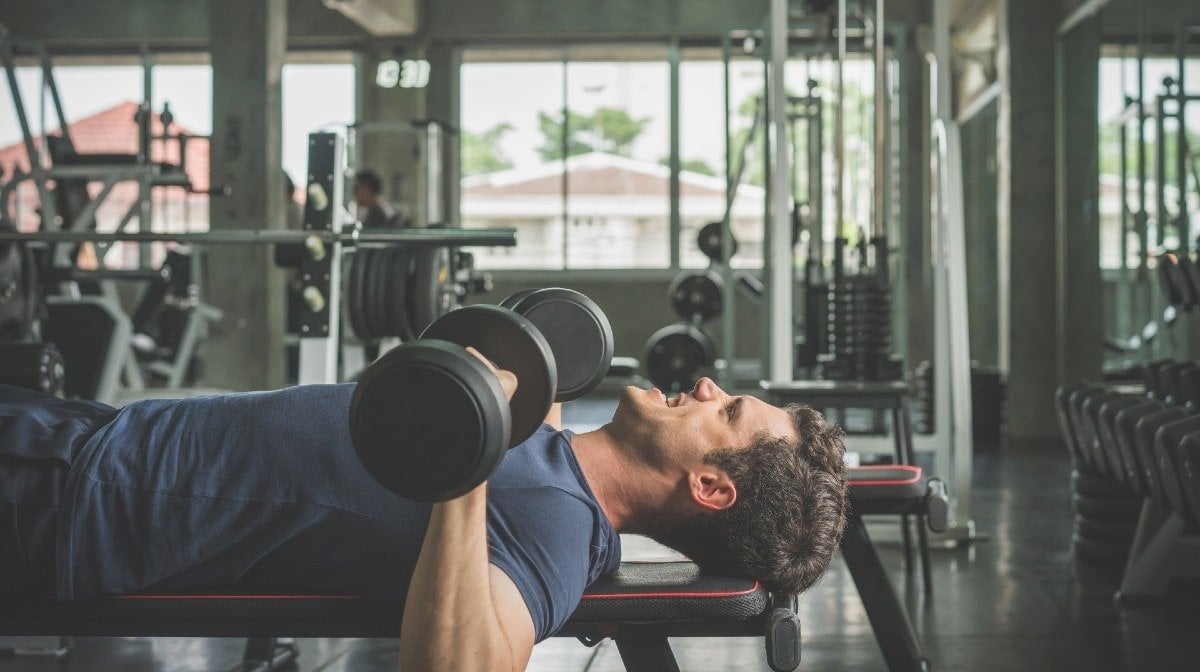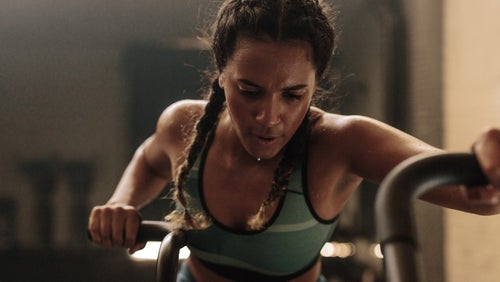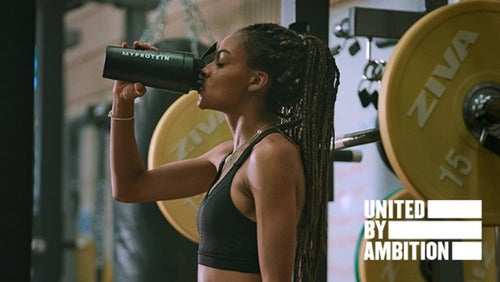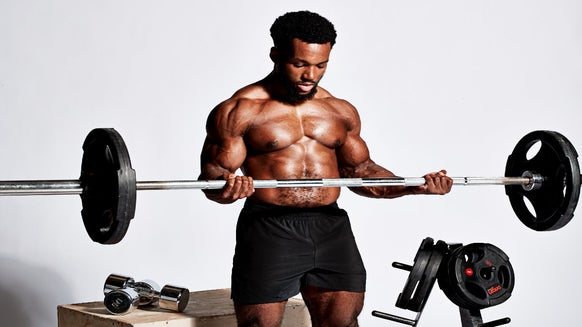How to do the Dumbbell Bench Press

There are many different exercises that are effective in developing the strength and size of the chest muscles. One of the most effective compound exercises is the dumbbell bench press, as it allows for a greater degree of shoulder adduction than a barbell press would (this is the primary action of the chest muscles).
In this article, we’ll run you through why you should be doing this exercise, and how to do it safely and effectively.

How to do the dumbbell bench press
Please note, this exercise can be performed on a flat bench or on an incline bench. Both have their benefits (and there are even more variations), but these are the main ones we’ll be focusing on.
Setting up
Sit on the bench and grip both dumbbells whilst they are resting on the upper thigh. Start with a neutral grip (palms facing in towards each other) & your feet should be placed slightly wider than shoulder width apart, providing sufficient stability. Whilst using your thighs and with some momentum, lean back onto the bench and kick the dumbbells onto your chest simultaneously. At this stage, the dumbbells should be gripped to the side of your chest, with your elbow bent but stacked directly beneath the wrist joint. Ensure that throughout this exercise, you maintain 5 points of contact – you head, upper back and glutes with the bench, and both of your feet firmly on the floor.
Technique
Take a deep breath, bracing your core. Press the load straight up, extending at the elbow until the wrist and elbow are stacked directly over the shoulder joint. This concentric part of the exercise should be performed powerfully and within the 1-2 second tempo range. As you reach the top of the movement, generate the mind to muscle connection by focusing on squeezing the chest together at the top before releasing slowly downwards to the starting position.
Recovery
Whilst the concentric (upwards drive) phase of the movement will ideally be performed with a 1-2 second tempo range, the eccentric (lowering) phase should be performed more slowly, in a controlled manner. Aim to lower the dumbbells back to the starting position for 3 seconds, taking time to feel a stretch across your chest.
Dumbbell Bench Press Benefits
Balance and Stabilisation
Using dumbbells will require more balance and stabilisation and can therefore be an extremely effective tool for functional training. Due to the inherent instability of this exercise, smaller muscles known as synergists will have to work harder to support the movement. Motor unit recruitment may subsequently be higher, resulting in greater adaptations to hypertrophy and strength once you have recovered appropriately.
Joint Friendly
Due to the fixed hand/elbow positioning of the barbell, our movement can become limited, sometimes irritating the shoulder or elbow joints. Using dumbbells allows us to have more freedom in our movement throughout (and potentially increased range of motion also). We can also alter the form and technique to suit our joints if we do have a slight joint problem, therefore working around individual issues.
Unilateral Implications
Muscular imbalances are a common consequence of training when bilateral exercises allow the dominant side to compensate for the weaker side (i.e., if you were to only train using machines), resulting in unbalanced physiques and performance. To prevent this, people should apply unilateral exercises (where only one side of the body is being used). With dumbbells, we can apply this bilateral exercise, forcing the chest muscles to work independently of one another).
Overload Methods
When we refer to progressive overload methods, we tend to look at training techniques such as drop sets, supersets etc. Whilst these can be trained using barbells; dumbbells provide a greater practical edge. With the barbell, you need to strip the bar, reload it, put the clips on and get back in position. With dumbbells, you can simply drop the weight and use a different set!

Common Mistakes
Lifting too heavy
When performing any form of resistance training, it is of course important that the loads used are sufficient to stimulate adaptations, whether that be strength or hypertrophy etc. Lifting too heavy refers to using loads that lead to a breakdown in the technical execution of the exercise. Generally, this should be avoided by using loads that are appropriate (i.e., train to failure for 10 reps, but make sure every rep has perfect execution). Performing exercises incorrectly simply to shift greater loads is counterproductive, as the target muscle will not be loaded effectively, and thus will not adapt to any stimulus.
Incorrect Set Up
When you are putting heavy loads above your chest and face, you best make sure you have a stable base of support. Your feet should be planted firmly on the floor, glutes pressed into the bench and your upper back and head in contact with the bench. Retract your shoulder blades to make a stable base of support with your upper back. Additionally, you are likely to be able to produce more power if you are properly bracing your core. You can also arch your lower back by contracting your spinal erectors (no, this won’t injure you!) – just remember, you’re not doing gymnastics, you don’t need a huge arch, just enough that you are effectively contracting your spinal erectors in your lower back.
Not Using a Spotter
With any free weight movement, there is a risk of dropping the weight on yourself. A spotter can help motivate you get the last few repetitions out, improve your confidence when performing the movement and critique your form. They’ll also benefit you by assisting you if you lose control of the weight. Instead of dropping the dumbbells on your body, the spotter can remove them carefully from your hands.
Lifting Your Head
Lifting your head whilst you bench is completely unnecessary and can ultimately lead to injuries such as strains to the muscles surrounding your neck. Avoid this by keeping your head firmly against the bench as you are pressing.
Dumbbell Bench Press Variations
Unilateral Press
This can be performed whilst holding both dumbbells, or simply with just one dumbbell. This variation is good for developing coordination and stability in the core.
Set up as you would for the bench press mentioned above. Once in the start position, keep one dumbbell in the start position, pressing to the top of the movement with the other arm. Return to the start position in a controlled manner and repeat on the opposite arm, alternating reps.
Dumbbell Fly
Whilst not
Set up as you would for the bench press as described above, then press the load to the top, with your wrists and elbows stacked over your shoulder. From here, with a slight bend in your elbow, allow your arms to fall to the sides, abducting your shoulders in a controlled manner. Do this until you feel a stretch in your chest/once your arms are parallel to the ground, then return to the start position.
Decline Press
This variation is great for developing strength and size in the lower fibres of the pectoralis major muscle of your chest, as specific positions preferentially activate different portions of this large fan-shaped muscle.
When setting up, simply drop the upper part of the bench by a few notches, creating the decline. Perform the exercise exactly as described for the regular dumbbell bench press – you may want a spotter here for safety.
READ THESE NEXT:

10 Best Chest Exercises for Women
Sculpt your upper body with these simple moves.

10 Quick Post-Workout Snacks To Fuel Your Muscles
Prevent hunger-fuelled rampages with these on-the-go snacks.

28 Songs To Fuel Your Ambition







